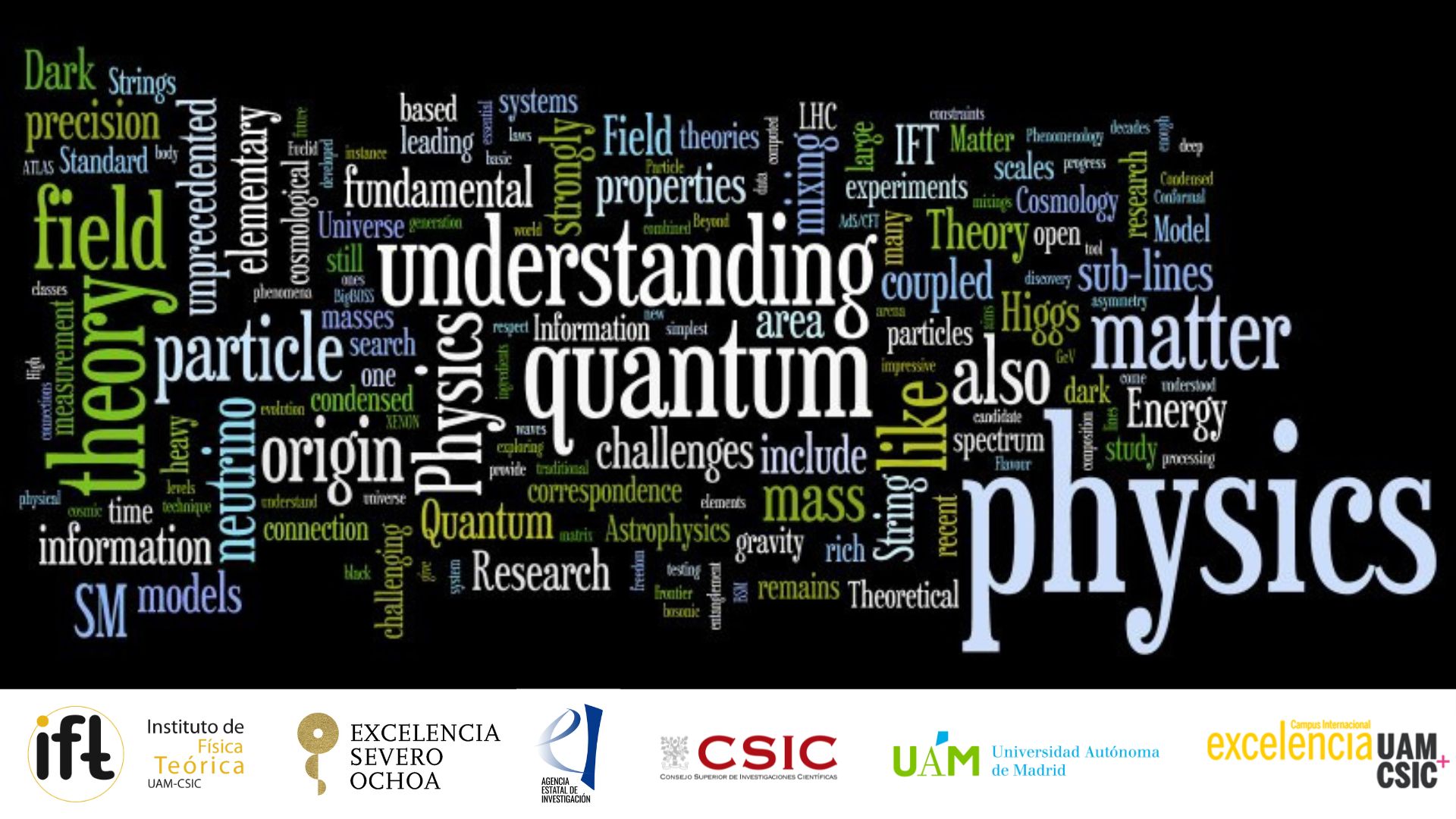Centro de Excelencia Severo Ochoa
Menu
Search

IFT Seminar Room/Red Room
In this thesis we study the collider phenomenology of four DM models. Two of them are embedded in the so-called DM portals, where a mediator particle is the responsible of the interactions between the hidden sector and the ordinary matter. The first of these models is a scalar singlet extension of the SM where the latest constraints on the mass and the mixing of the new Higgs boson are studied. We also study the production of this scalar boson at the LHC analysing the decay channel into two SM Higgses with final products H → hh → b ̄ bW W → b ̄ b + ν − ν ̄ . The second model of the DM portals is based on U (1) extensions of the SM, motivated by String Theory phenomenological models. Here, the massive Z that arises from the U (1) symmetries becomes the mediator between the DM sector and the visible matter. An important pattern of isospin-violating interactions is found between both sectors due to the nature of the couplings with the mediator. This has a strong impact on direct detection experiments of dark matter, since this kind of interactions couples differently to neutrons and protons, in contrast to the majority of models in the literature where both couplings are equal.
The other two models described in this Thesis are both supersymmetric extensions of the Minimal Supersymmetric Standard Model. The first of these models is based on the Next-to-Minimal Super-symmetric Standard Model with Right-Handed (RH) sneutrinos. In this construction the RH sneutrino is a good candidate for DM while the RH neutrino is long-lived since its decay width is proportional to the neutrino Yukawa coupling that is predicted to be small. The late decay of the RH neutrinos leads to very specific signatures in the LHC that are displaced vertices. Another exotic signature of this construction is the production of a long-lived stau that could escape the detector leaving a characteristic trail. The second supersymmetric model is the Triplet extension of the Minimal Supersymmetric Standard Model that enlarges the electroweakino sector. As a consequence the loop induced decays of the Higgs h → γγ and h → Zγ could enhance up to a 40–60% compared with the ones of the SM. Furthermore, those new states are also relevant for DM phenomenology. We found that the lightest neutralino is a good candidate for DM and fulfils all the experimental constraints. Those requirements strongly affects the Higgs sector reducing the loop-induced decays, h → γγ and h → Zγ, to a 20% at most.
Social media